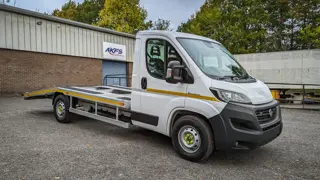One of the most significant challenges of widespread EV adoption has been a lack of secondary market. Now the UK market for used EVs is booming, how can motorists and dealers protect their residual values, asks Mark Llewellyn, managing director of Revive!
Last year, used electric vehicles (EVs) hit a record in demand with sales increasing 57.4% on the secondary market to 188,382 cars.
This change reflects a growing appetite for more affordable sustainable transport and the inevitable growth of the EV market as the 2035 ban on petrol and diesel vehicles looms. While the market is mounting, concerns around depreciation remain a significant issue for owners and dealers alike.
According to the AA, a new car will have lost around 40% of its value after one year and around 60% by the end of its third year. For EVs, this means a drop in value of around £11,225 in those first three years.
While EVs may face the same types of depreciation factors as conventional cars, they also have a number of EV-specific considerations.
While internal combustion vehicles will depreciate with age, mileage, condition, and service history, EV buyers must also consider battery condition and the rate of technological change. One US study found that, on average, most lithium-ion car batteries retained around 90% of their capacity after 100,000 miles.
This is around 14 years’ worth of driving for the average UK motorist. At the same time, the technology and features of BEVs from 2015 are substantially different to those made in 2021 – the industry changed significantly during this time and that is reflected in older EV pricing.
The case for secondary market EVs
There are also points against the depreciation of EVs; factors that make them more appealing than other vehicles on the used market. One of the most obvious is Ultra-Low Emission Zones (ULEZ) and Clean Air Zones, which are found in London and a number of other major cities across the UK. As these zones become more common and the costs associated with them increase, zero-tailpipe emission EVs will be a more attractive option.
One of the most prominent differences between second-hand EVs and the majority of other vehicles on the market is technology. The first generations of EVs were designed to be technology-focused and, often, premium segment vehicles. As these now reach their second or third ‘home’, many motorists see the value in these vehicles relative to ICE models of the same period.
From a sustainability perspective, switching to a second-hand EV could significantly reduce an individual's carbon footprint. According to the International Energy Agency, an EV with a 186-mile battery range will produce 54% less CO2 equivalent over its lifetime, including manufacturing.
The growing secondary market is an excellent way to ensure more drivers adopt EVs and help meet the UK’s Net Zero 2050 commitment.
With more than 90% of buyers conducting extensive online research before visiting a dealership, most are making their initial judgment based on photos and videos. For many buyers, these images offer an initial assessment of the vehicle’s condition. As such, sellers looking to achieve a higher residual value should consider appropriately preparing their vehicle for sale. To help motorists and dealers get their EVs in top condition and ready for the market, companies providing SMART repair offer a convenient lifeline.
As the UK’s secondary market for EVs expands and buyer preferences shift, it is becoming more competitive. Without due care and consideration, motorists and dealers could find themselves facing significant depreciation.
Mark Llewellyn is managing director at Revive!




















Login to comment
Comments
No comments have been made yet.